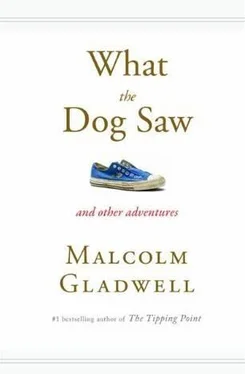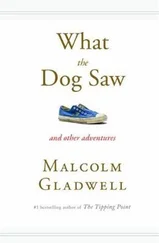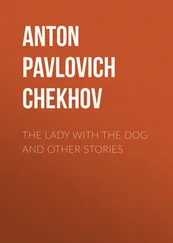Malcolm Gladwell - What the Dog Saw - And Other Adventures
Здесь есть возможность читать онлайн «Malcolm Gladwell - What the Dog Saw - And Other Adventures» весь текст электронной книги совершенно бесплатно (целиком полную версию без сокращений). В некоторых случаях можно слушать аудио, скачать через торрент в формате fb2 и присутствует краткое содержание. Жанр: Психология, на английском языке. Описание произведения, (предисловие) а так же отзывы посетителей доступны на портале библиотеки ЛибКат.
- Название:What the Dog Saw: And Other Adventures
- Автор:
- Жанр:
- Год:неизвестен
- ISBN:нет данных
- Рейтинг книги:5 / 5. Голосов: 1
-
Избранное:Добавить в избранное
- Отзывы:
-
Ваша оценка:
- 100
- 1
- 2
- 3
- 4
- 5
What the Dog Saw: And Other Adventures: краткое содержание, описание и аннотация
Предлагаем к чтению аннотацию, описание, краткое содержание или предисловие (зависит от того, что написал сам автор книги «What the Dog Saw: And Other Adventures»). Если вы не нашли необходимую информацию о книге — напишите в комментариях, мы постараемся отыскать её.
What the Dog Saw: And Other Adventures — читать онлайн бесплатно полную книгу (весь текст) целиком
Ниже представлен текст книги, разбитый по страницам. Система сохранения места последней прочитанной страницы, позволяет с удобством читать онлайн бесплатно книгу «What the Dog Saw: And Other Adventures», без необходимости каждый раз заново искать на чём Вы остановились. Поставьте закладку, и сможете в любой момент перейти на страницу, на которой закончили чтение.
Интервал:
Закладка:
It took a long time for the food world to catch up with Howard Moskowitz. He knocked on doors and tried to explain his idea about the plural nature of perfection, and no one answered. He spoke at food-industry conferences, and audiences shrugged. But he could think of nothing else. “It’s like that Yiddish expression,” he says. “Do you know it? To a worm in horseradish, the world is horseradish!” Then, in 1986, he got a call from the Campbell ’s Soup Company. They were in the spaghetti-sauce business, going up against Ragú with their Prego brand. Prego was a little thicker than Ragú, with diced tomatoes as opposed to Ragú’s purée, and, Campbell’s thought, had better pasta adherence. But, for all that, Prego was in a slump, and Campbell ’s was desperate for new ideas.
Standard practice in the food industry would have been to convene a focus group and ask spaghetti eaters what they wanted. But Moskowitz does not believe that consumers – even spaghetti lovers – know what they desire if what they desire does not yet exist. “The mind,” as Moskowitz is fond of saying, “knows not what the tongue wants.” Instead, working with the Campbell ’s kitchens, he came up with forty-five varieties of spaghetti sauce. These were designed to differ in every conceivable way: spiciness, sweetness, tartness, saltiness, thickness, aroma, mouth feel, cost of ingredients, and so forth. He had a trained panel of food tasters analyze each of those varieties in depth. Then he took the prototypes on the road – to New York, Chicago, Los Angeles, and Jacksonville – and asked people in groups of twenty-five to eat between eight and ten small bowls of different spaghetti sauces over two hours and rate them on a scale of one to a hundred. When Moskowitz charted the results, he saw that everyone had a slightly different definition of what a perfect spaghetti sauce tasted like. If you sifted carefully through the data, though, you could find patterns, and Moskowitz learned that most people’s preferences fell into one of three broad groups: plain, spicy, and extra-chunky, and of those three the last was the most important. Why? Because at the time there was no extra-chunky spaghetti sauce in the supermarket. Over the next decade, that new category proved to be worth hundreds of millions of dollars to Prego. “We all said, ‘Wow!’ ” Monica Wood, who was then the head of market research for Campbell ’s, recalls. “Here there was this third segment – people who liked their spaghetti sauce with lots of stuff in it – and it was completely untapped. So in about 1989 or 1990 we launched Prego extra-chunky. It was extraordinarily successful.”
It may be hard today, twenty years later – when every brand seems to come in multiple varieties – to appreciate how much of a breakthrough this was. In those years, people in the food industry carried around in their heads the notion of a platonic dish – the version of a dish that looked and tasted absolutely right. At Ragú and Prego, they had been striving for the platonic spaghetti sauce, and the platonic spaghetti sauce was thin and blended because that’s the way they thought it was done in Italy. Cooking, on the industrial level, was consumed with the search for human universals. Once you start looking for the sources of human variability, though, the old orthodoxy goes out the window. Howard Moskowitz stood up to the Platonists and said there are no universals.
Moskowitz still has a version of the computer model he used for Prego. It has all the coded results from the consumer taste tests and the expert tastings, split into the three categories (plain, spicy, and extra-chunky) and linked up with the actual ingredients list on a spreadsheet. “You know how they have a computer model for building an aircraft,” Moskowitz said as he pulled up the program on his computer. “This is a model for building spaghetti sauce. Look, every variable is here.” He pointed at column after column of ratings. “So here are the ingredients. I’m a brand manager for Prego. I want to optimize one of the segments. Let’s start with Segment 1.” In Mosko-witz’s program, the three spaghetti-sauce groups were labeled Segment 1, Segment 2, and Segment 3. He typed in a few commands, instructing the computer to give him the formulation that would score the highest with those people in Segment 1. The answer appeared almost immediately: a specific recipe that, according to Moskowitz’s data, produced a score of 78 from the people in Segment 1. But that same formulation didn’t do nearly as well with those in Segment 2 and Segment 3. They scored it 67 and 57, respectively. Moskowitz started again, this time asking the computer to optimize for Segment 2. This time the ratings came in at 82, but now Segment 1 had fallen 10 points, to 68. “See what happens?” he said. “If I make one group happier, I piss off another group. We did this for coffee with General Foods, and we found that if you create only one product, the best you can get across all the segments is a 60 – if you’re lucky. That’s if you were to treat everybody as one big happy family. But if I do the sensory segmentation, I can get 70, 71, 72. Is that big? Ahhh. It’s a very big difference. In coffee, a 71 is something you’ll die for.”
When Jim Wigon set up shop that day in Zabar’s, then, his operating assumption was that there ought to be some segment of the population that preferred a ketchup made with Stanislaus tomato paste and hand-chopped basil and maple syrup. That’s the Moskowitz theory. But there is theory and there is practice. By the end of that long day, Wigon had sold ninety jars. But he’d also got two parking tickets and had to pay for a hotel room, so he wasn’t going home with money in his pocket. For the year, Wigon estimates, he’ll sell fifty thousand jars – which, in the universe of condiments, is no more than a blip. “I haven’t drawn a paycheck in five years,” Wigon said as he impaled another meatball on a toothpick. “My wife is killing me.” And it isn’t just World’s Best that is struggling. In the gourmet-ketchup world, there is River Run and Uncle Dave’s, from Vermont, and Muir Glen Organic and Mrs. Tomato Head Roasted Garlic Peppercorn Catsup, in California, and dozens of others – and every year Heinz’s overwhelming share of the ketchup market just grows.
It is possible, of course, that ketchup is waiting for its own version of that Rolls-Royce commercial, or the discovery of the ketchup equivalent of extra-chunky – the magic formula that will satisfy an unmet need. It is also possible, however, that the rules of Howard Moskowitz, which apply to Grey Poupon and Prego spaghetti sauce and to olive oil and salad dressing and virtually everything else in the supermarket, don’t apply to ketchup.
3.
Tomato ketchup is a nineteenth-century creation – the union of the English tradition of fruit and vegetable sauces and the growing American infatuation with the tomato. But what we know today as ketchup emerged out of a debate that raged in the first years of the last century over benzoate, a preservative widely used in late-nineteenth-century condiments. Harvey Washington Wiley, the chief of the Bureau of Chemistry in the Department of Agriculture from 1883 to 1912, came to believe that benzoates were not safe, and the result was an argument that split the ketchup world in half. On one side was the ketchup establishment, which believed that it was impossible to make ketchup without benzoate and that benzoate was not harmful in the amounts used. On the other side was a renegade band of ketchup manufacturers, who believed that the preservative puzzle could be solved with the application of culinary science. The dominant nineteenth-century ketchups were thin and watery, in part because they were made from unripe tomatoes, which are low in the complex carbohydrates known as pectin, which add body to a sauce. But what if you made ketchup from ripe tomatoes, giving it the density it needed to resist degradation? Nineteenth-century ketchups had a strong tomato taste, with just a light vinegar touch. The renegades argued that by greatly increasing the amount of vinegar, in effect protecting the tomatoes by pickling them, they were making a superior ketchup: safer, purer, and better tasting. They offered a money-back guarantee in the event of spoilage. They charged more for their product, convinced that the public would pay more for a better ketchup, and they were right. The benzoate ketchups disappeared. The leader of the renegade band was an entrepreneur out of Pittsburgh named Henry J. Heinz.
Читать дальшеИнтервал:
Закладка:
Похожие книги на «What the Dog Saw: And Other Adventures»
Представляем Вашему вниманию похожие книги на «What the Dog Saw: And Other Adventures» списком для выбора. Мы отобрали схожую по названию и смыслу литературу в надежде предоставить читателям больше вариантов отыскать новые, интересные, ещё непрочитанные произведения.
Обсуждение, отзывы о книге «What the Dog Saw: And Other Adventures» и просто собственные мнения читателей. Оставьте ваши комментарии, напишите, что Вы думаете о произведении, его смысле или главных героях. Укажите что конкретно понравилось, а что нет, и почему Вы так считаете.












